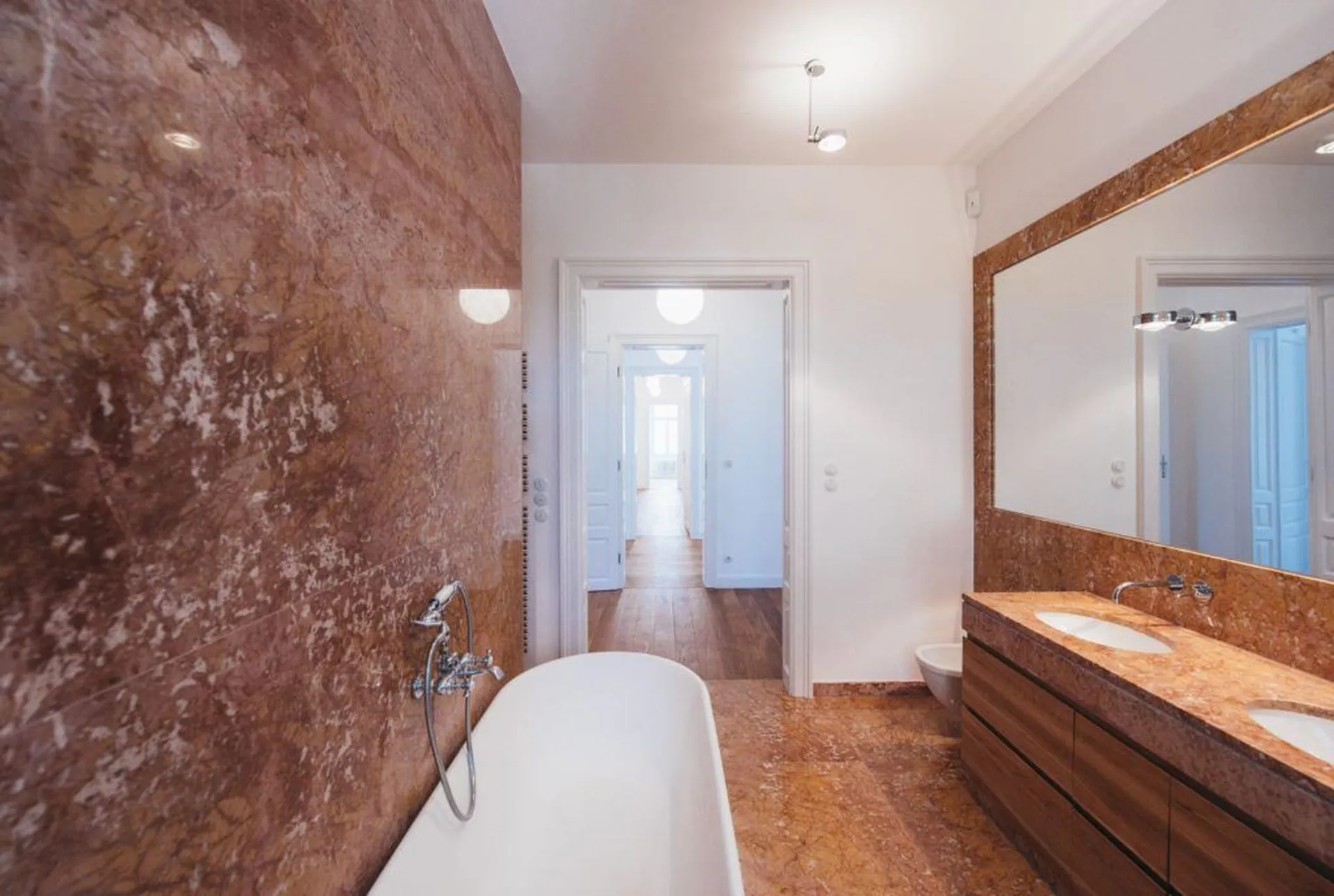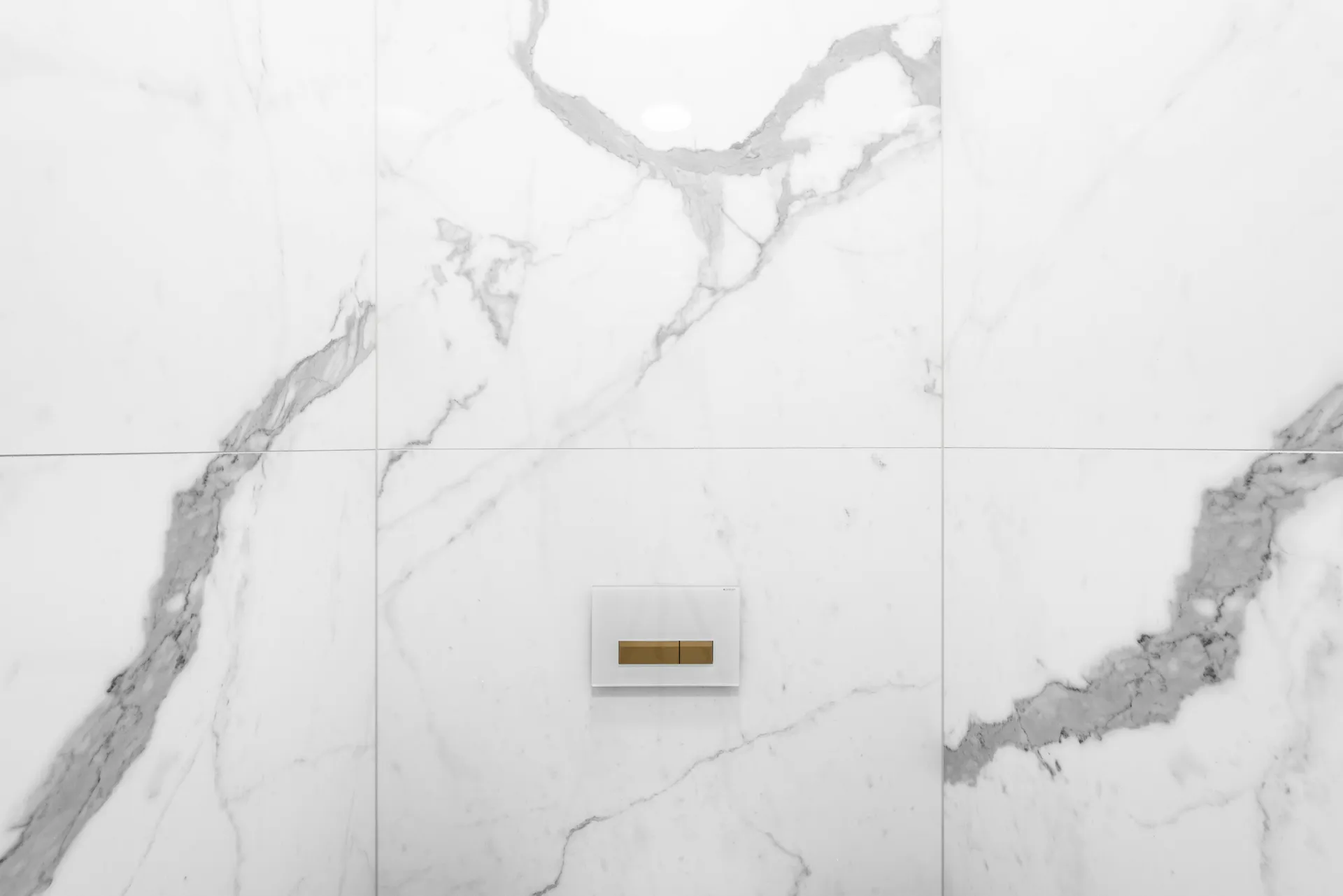Marble is a so-called metamorphic rock and is one of the most popular types of stone. It is formed very slowly. High pressure and high temperatures as well as contact with magmas cause the rock to melt and consequently transform into the coveted stone. During this process, source rocks such as limestone, dolomite or other carbonate-rich rocks are transformed into marble. There are large marble deposits in Europe. Italy, for example, is one of the most famous quarrying countries for this popular stone. The well-known Carrara marble is extracted there and is very popular and highly sought-after. Marble is sawn from the quarries as a raw block using wire saws. Later in the factories, wire saws are also used to process the raw blocks. In contrast to limestone, marble is not as common and is therefore more expensive. Various other natural stones - such as limestone - are often mistakenly referred to as marble.

However, the misnomer has been around for centuries. Marble is generally regarded as a cultural term and is often used incorrectly in the fields of architecture, art history or interior design.
The differences between limestone and marble can already be seen visually. Limestone has a rather matt surface. Marble, on the other hand, shines, especially when the surface is polished. A sugar-shaped, glittering structure can also be seen in the cross-section of marble. In addition to their appearance, the two types of stone also have different properties. For example, marble is a much harder and denser stone than limestone.

The natural stone marble was already popular with the Greeks and Romans as a building material. Numerous important and impressively designed works of art and buildings were created from this material. The stone was also often used in architecture and interior design. Numerous impressive steps and staircases are made of marble. This special stone was also a popular choice of material for table tops, wall tiles and washbasins. Polished marble in particular is extremely slippery when the surface is wet. The floor can be made more slip-resistant by means of laser or chemical treatment. But beware: there is no such thing as 1001TP3 slip resistance with marble.
Marbling is a characteristic feature of marble. Both dark and light stripes, veins or spots can run through the stone - depending on the composition of the source stone. Marble is available in a wide variety of color combinations, such as silver, black, red, green, yellow-brown, gold and purple. The best-known types of marble include: Krastal (Austria), Carrara (Italy), Absolute Grey (Pakistan), Afyon (Turkey), Blu Argento (Italy), Impact Grey (Malaysia), Lukas Green (Greece), Ajax (Greece), Lappia Green (Finland) Estremoz-Rosé (Portugal), and many more.
Crystal marble is particularly suitable for outdoor areas. It has a slightly rough surface and is therefore one of the more slip-resistant floor coverings. Thanks to its mostly whitish to light gray surface, the stone reflects the sun's rays. This means you can rely on the cooling and pleasant effect of your stone flooring even at the highest temperatures. Due to its properties, crystal marble is often used for pool surrounds and terraces. Take a look at our previously realized Projects inspire you! If you have any questions, our experts will be happy to help you at any time!
Natural stone is very popular for use indoors. Whether wall cladding, bathrooms or table tops - marble gives your living space that certain luxury touch. In order to maintain the glossy surface, care must be taken when cleaning and maintaining the stone to ensure that no acids come into contact with it. Commercially available cleaning agents or cleaning sponges are also not suitable for the care of natural stone. Our experts will be happy to tell you about the many options for marble as a design element for your living space and how best to care for your natural stone during a personal appointment.
Due to its material properties, marble is ideal for: Wall cladding, floor tiles, steps, fireplace surrounds, columns, washstands, window sills, counter tops, patio slabs, garden paths, swimming pool surrounds and much more. However, it is important to note that not every type of marble is suitable for every application. Get inspiration in our Showroom in Hollabrunn & Vienna! We are happy to advise you!
Opening hours: Mon to Fri: 8:00 - 12:00 and 13:00 - 18:00 | Saturday: 8:00 to 12:00
You can find news, current events, inspiration and much more on social media: